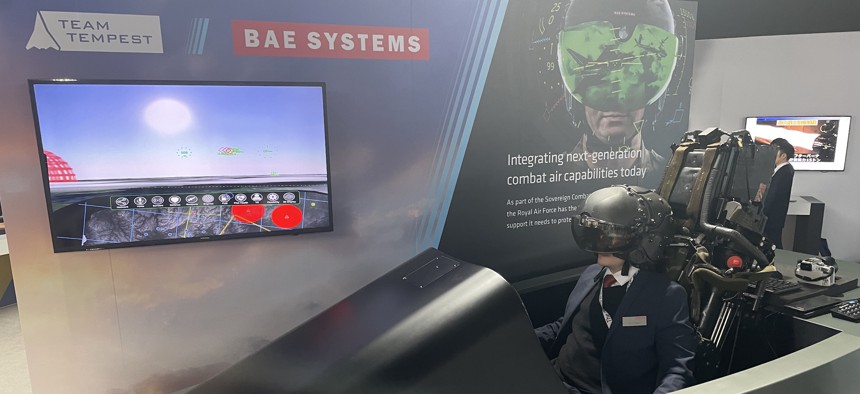
BAE Systems showed off a minimalist cockpit mockup for the next-gen Tempest jet at Farnborough Air Show 2022. Bradley Peniston / Defense One
Tempest Tabula Rasa: UK’s Next-Gen Fighter Cockpit Has No Instruments, Yet
BAE suggests under-development avionics architecture could influence other aircraft as well.
FARNBOROUGH, England—There’s nothing but a pair of joysticks and a sensor-stuffed helmet in the Tempest cockpit mockup that BAE Systems displayed this week at the Farnborough Air Show: nary a gauge, dial, or switch in sight. It’s hardly the final form of the UK’s next-gen fighter jet, slated to fly in five years; instead, it’s emblematic of a clean-sheet rethinking and a dedication to augmented reality as the primary pilot-plane interface.
“Everything has to earn its way into the cockpit,” said Alvin Fernandes, BAE’s senior engineer for human factors on the Tempest project.
A big screen mounted outside the cockpit reflects what the BAE employee in the cockpit is seeing on his helmet display: a simulated view of the world in which enemy missile batteries appear as red domes on the horizon. Lower in the field of vision, a row of circles offer access to the aircraft’s various systems when cued by eye trackers in the visor. Off to the side, dark transparent rectangles await assignment as UAV controllers, threat lists, or whatever the pilot needs.
BAE is currently reviewing technologies by hundreds of companies, searching for the ones that can best help the person in the Tempest cockpit be not just a pilot, but a battle manager, Fernandes said. The software-first approach will also make it easier to build simulators and even use the eventual Tempest architecture on future aircraft, he said.




